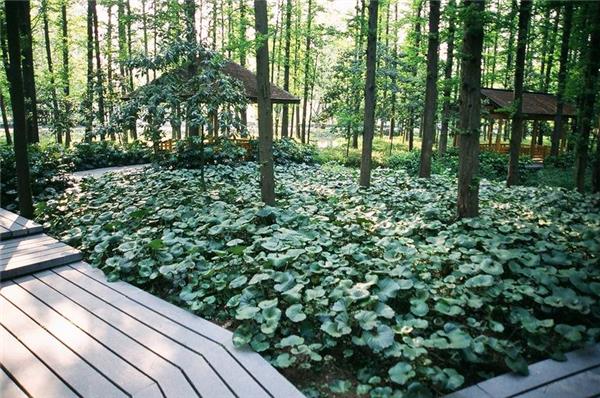Six elements of breeding ground cover plants that need to be paid attention to
Raise good ground cover plants, they can greatly improve the beauty of our city or home courtyard, so that people maintain a state of physical and mental well-being. Let's take a look at the six basic elements of cultivating and conserving ground cover plants.

Collocation: the ground cover plant is relatively low. In the courtyard cultivation configuration, the general planting proportion is 40% for shrubs and 60% for herbs. When planting grass and local cover flowers in the courtyard, it is appropriate to grow them in color blocks, such as hyacinth, daffodils, tulips, bunches of red, etc., when planting the same variety or the same color, not mixed planting, which will make the courtyard appear cluttered. On the balcony, there are relatively more varieties, and plant species of different colors or varieties can be put together to show lively and colorful. Indoor cultivation is appropriate to choose evergreen, shade-tolerant, long flowering plant varieties, in general, can also be mixed to highlight the color.
Moisture: when raising seedlings, the supply of water is generally not a problem, but if the days of raising seedlings are too long, the seedlings grow, and the temperature is difficult to control in the later stage, the method of water control should be adopted to prevent overgrowth. In all stages of seedling cultivation, because the nutritional area is too small, water control is taken for a long time to prevent glory, but this will lead to seedling aging, which is not uncommon in production. The amount of water content directly affects the content of soil air, soil temperature and fertilizer decomposition. Too much water, the root system lack of oxygen, resulting in absorption disorders.

Fertilization: during the growing period of ground cover plants, fertility should be replenished in time according to the needs of all kinds of plants, especially for some flowering ground cover plants. Fertilization is mainly based on the application of thin inorganic fertilizers such as ammonium sulfate, urea, calcium superphosphate, potassium chloride and so on. Sometimes in early spring and late autumn or before and after the plant dormancy period, the spreading method, combined with soil mulching, is beneficial to overwintering plants, and can be adjusted to local conditions, making full use of compost, cake fertilizer, river mud and other organic fertilizer sources.
Humidity: air humidity directly affects the evaporation of water and transpiration of seedlings. The air humidity of plastic film greenhouse is easy to be on the high side, which seriously restrains the transpiration of seedlings, which is disadvantageous to the growth of seedlings, so we should release air and reduce humidity properly. If there is a sudden strong wind in the greenhouse or arch shed, when the air humidity in the open field is low, the transpiration of seedlings will be too strong and too fast, resulting in water shortage wilting and serious leaf edge necrosis, so that it can not be recovered.

Pruning: in the usual cultivation management, we should pay attention to regular pruning of cultivated plants to remove dead branches, old branches and weeds. The plant height can be controlled artificially by pruning, and the artificial modeling can also be carried out according to the pattern and flavor of the house.
Diseases and insect pests: most ground cover plant varieties have strong resistance to diseases and insect pests, but sometimes they can also cause diseases and insect pests due to poor drainage or improper fertilization and other reasons. When plants are planted in a large area, the diseases most likely to occur are Rhizoctonia solani, Botrytis cinerea, white silk disease, etc., which can wither the land, so spraying measures should be taken to prevent it from spreading and expanding. Insect pests are most likely to occur in Spodoptera litura, grubs, aphids, bridge insects and so on.

Of course, in addition to the six elements mentioned above, while raising ground cover plants, we also need to pay attention to the different needs of different plants for light and temperature, especially those who use these plants for indoor pot culture. We should pay more attention to these aspects.
Related
- Wuhan Hospital Iron Tree Blooming Result Was Instantly Frightened by the Gardener Master
- Which variety of camellia is the most fragrant and best? Which one do you like best?
- What is the small blue coat, the breeding methods and matters needing attention of the succulent plant
- Dormancy time and maintenance management of succulent plants during dormancy
- Minas succulent how to raise, Minas succulent plant pictures
- What are the varieties of winter succulent plants
- How to raise succulent plants in twelve rolls? let's take a look at some experience of breeding twelve rolls.
- Attention should be paid to water control for succulent plants during dormant period (winter and summer)
- Watering experience of twelve rolls of succulent plants
- Techniques for fertilizing succulent plants. An article will let you know how to fertilize succulent plants.



